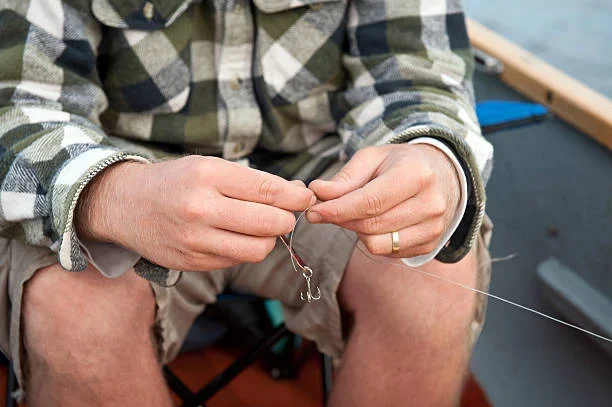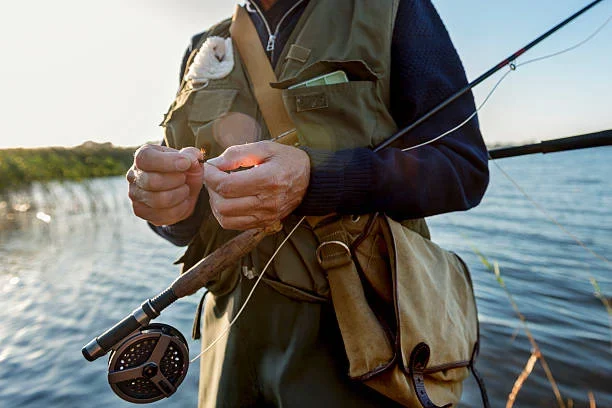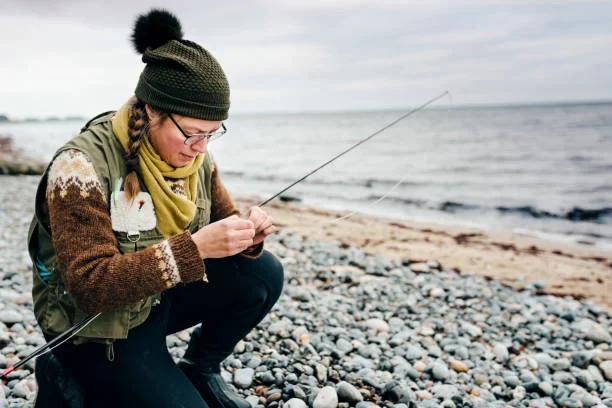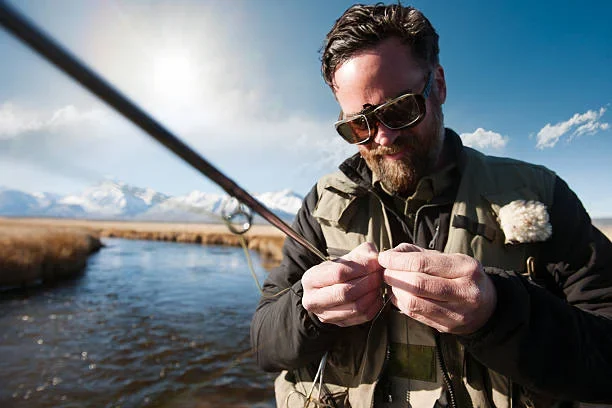Ask any seasoned fly angler what separates a good day on the water from a heartbreaking one, and they’ll tell you, it’s all in the knots. You can have the finest rod, the perfect fly, and ideal conditions, but if your knots aren’t solid, that trophy fish is as good as gone.
Fly fishing isn’t just about technique, location, or luck; it’s about connection. Literally. And the strength of that connection often comes down to your knots. Whether you’re tying on a delicate dry fly or securing backing to your reel, mastering the right fly fishing knots can be the difference between landing a trophy trout and watching it slip away.

Let’s dive into the essential fly fishing knots that every angler should know, and why they matter.
1. Improved Clinch Knot – For Tying Fly to Tippet
Use Case: Attaching your fly to the tippet
Strength: ~95% knot strength with monofilament
This is one of the most popular and trusted knots in fly fishing. It’s strong, simple to tie, and works well with most small flies. When tied correctly, the Improved Clinch Knot keeps your fly secure even with light tippets.
2. Double Surgeon’s Knot – For Joining Two Lines
Use Case: Tying tippet to leader
Strength: ~90%
The Double Surgeon’s Knot is known for its ease and reliability, especially when working with different diameter lines. Unlike the Blood Knot, it requires fewer wraps and is quicker to tie in low light or cold conditions.
3. Arbor Knot – For Securing Backing to Reel
Use Case: Attaching backing to the reel spool
Strength: Depends on line material, typically strong enough for most reel setups
The Arbor Knot is the go-to for securing your backing line to the reel. It’s quick, effective, and doesn’t slip under pressure. Essential for setting up your reel correctly.The Double Surgeon’s Knot is known for its ease and reliability, especially when working with different diameter lines. Unlike the Blood Knot, it requires fewer wraps and is quicker to tie in low light or cold conditions.
4. Nail Knot – For Attaching Leader to Fly Line
Use Case: Connecting fly line to leader without a loop
Strength: Very strong with a clean finish
The Arbor Knot is the go-to for securing your backing line to the reel. It’s quick, effective, and doesn’t slip under pressure. Essential for setting up your reel correctly.The Double Surgeon’s Knot is known for its ease and reliability, especially when working with different diameter lines. Unlike the Blood Knot, it requires fewer wraps and is quicker to tie in low light or cold conditions.
5. Loop Knot – For Better Fly Action
Use Case: Tying flies for increased movement
Strength: ~90–95%
This knot gives your fly more natural movement in the water, especially for streamers or nymphs. It’s ideal when you want a lifelike presentation without restricting the fly’s action.
6. Blood Knot – For Joining Similar Diameter Lines
Use Case: Leader-to-tippet connections
Strength: ~80–90% depending on precision
This knot gives your fly more natural movement in the water, especially for streamers or nymphs. It’s ideal when you want a lifelike presentation without restricting the fly’s action.
7. Davy Knot – Small, Strong & Fast
Use Case: Tying small flies
Strength: ~85–90%
Perfect for size 18–22 flies, the Davy Knot is compact and fast. It allows the fly to sit closer to the tippet for more precision. Once mastered, it’s one of the fastest fly-to-tippet knots out there

🧵 Quick Reference Table: Top Fly Fishing Knots
Knot Name | Primary Use | Approx. Strength | Best For |
Improved Clinch Knot | Fly to Tippet | ~95% | Beginners, dry flies |
Double Surgeon’s Knot | Tippet to leader | ~90% | Quick changes, low light conditions |
Arbor Knot | Backing to reel | Variable | Reel setup |
Nail Knot | Leader to fly line | High | Sleek connection, no loop setup |
Loop Knot | Fly to Tippet (for action) | ~90–95% | Streamers, natural presentation |
Blood Knot | Similar diameter lines | ~85–90% | Clean leader-tippet joins |
Davy Knot | Fly to tippet (small flies) | ~85–90% | Speed and finesse |

💡 Final Thoughts
Learning and mastering these fly fishing knots isn’t just a rite of passage; it’s an investment in your success on the water. With just 7 essential knots, you’ll cover 95% of all scenarios you’ll face while fly fishing.
Whether you’re targeting rainbow trout in Montana or bonefish in the Bahamas, your knot skills can make or break the day.
Want to take it to the next level? Practice these knots at home with different line materials and simulate wet conditions. A 2023 survey by Orvis found that anglers who practiced knot tying weekly had a 33% higher landing success rate.











